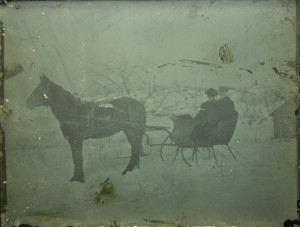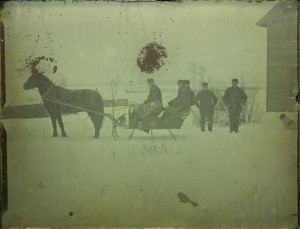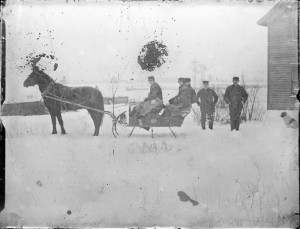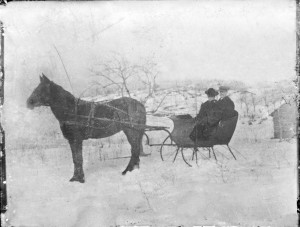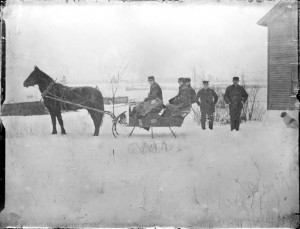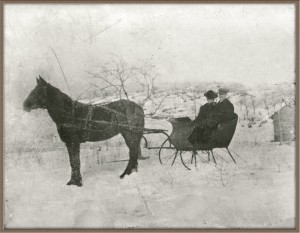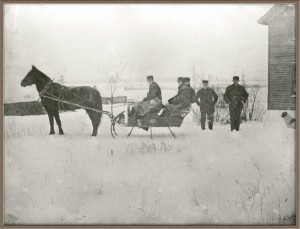We have a number of Ambrotype images from around 1855 that have been passed down from long gone relatives. Two in particular are Winter scenes, and I’m planning on using the images for our 2015 Christmas card. The reason for blogging about this is to share some information about this interesting subject, especially for anyone in the same situation. It’s pretty obvious that very little care was taken over the years to protect these images (they have mold, paint splatter, chipped edges, fingerprints that seem permanent, you name it).
Our two Ambrotype images are in very poor condition, not just due to the conditions mentioned above. They are very faded or possibly the original exposure was more underexposed than usual for Ambrotype, and these were not protected or framed. I see no evidence of the varnish protective coating that should have been applied. Hand held with no backing, they are essentially very old, fragile negatives.
Wikipedia has a nice write-up on Ambrotype: https://en.wikipedia.org/wiki/Ambrotype.
The original photography wasn’t that great, but still interesting and definitely worthy of Christmas card images, eventually…
My initial digitization of the images was pretty straight forward:
- Place the glass on black felt (thick, so no light leakage), this makes it a positive vs a negative without the black background
- Light the image with 5500K soft LED bank, not direct, but from the top side, that way it lit up the glass internally and externally, kind of like fiber optics light up
- Secure a Canon EOS 5d mk III to a tripod, 640 ISO, 1/200, manual focus, focus via the live view (you can zoom in and get a very accurate focus), set to 5500K, and take the shot
- Pull into Lightroom
- Set to black and white (not grayscale)
- Adjust color channels for optimum spread
- Go basically crazy on sliders for exposure, contrast, highlights, shadows, whites, blacks, was necessary since very underexposed or possibly just faded over the years
- Export to Photoshop and use a combination of clone, heal, burn, dodge, and the light dialog to repair, but just enough to fix the really bad elements of the image. Any auto dust/scratch cleanup made the image worse, so I abandoned using those after seeing the results
- Edited in ON1 Effects to add an antique bronze color
- Final edit in Photoshop to crop out the side junk and add a simple frame
Original images:
Images after Lightroom adjustments:
Images after initial Photoshop CS adjustments:
Final images with ON1 Effects colorization and Photoshop CS framing:
I could have easily taken the Photoshop repairs to the point of completely restoring the image, but was overruled by my wife, she wanted some vintage worn out look to be left intact.
Once I realized that these were Ambrotype images (thanks to Wikipedia and Google U.), my interest increased and after very little searching I found out that photographers are still offering Ambrotype services! It’s a mix of art and science with chemicals that probably aren’t great for skin or lungs, but I’m still intrigued. One such explanation of the recipe can be found at http://www.alternativephotography.com/wp/processes/wetplate/wet-plate-collodion-process-ambrotypes, I must admit, I’m wondering if there might be some room here in Kalamazoo to offer such a service. Especially if I could find a large format camera for say an 8×10 plate of glass. Maybe this is more of what might be described as retirement tinkering.
